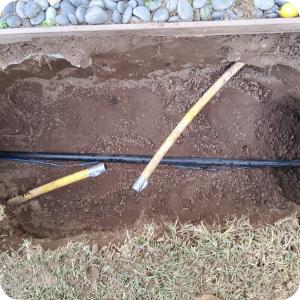Boring
Pipe boring is an efficient way to install pipes without damaging land or vegetation. Instead of digging up a trench, the bore path will be made by using machines designed for shallow arcs- making it less invasive on both soil quality and natural resources like water sources.
Advantages of trenchless pipe installation technology
- It is eco-friendly
The device is designed to minimize damage caused by excavating the soil. The mechanism used ensures that disturbance will be minimal, so all you’ll see around your property are results- not hassle! - It is quicker.
The method is a time-saving and soil-preserving alternative to traditional methods. The pipes are laid as boring continues, reducing the amount of work that needs to be done for them to connect with one another or their destinations on site.
The implementation also eliminates any need to dig up trenches which not only takes valuable resources but can be very dangerous if there are unforeseen complications while doing so!
- Saves on space
With trenching, space must be created where the trenches will be dug. Pipe boring, on the other hand, can be done even under existing sidewalks and patios. It is a very economical process. - No need to relocate people while installing the pipe
In contrast to traditional methods, boring only affects a small area and does not cause significant damage. This means that people in your neighborhood will not have their lives disrupted by construction equipment or other disruptors on site. - It is easier to rehabilitate the area.
Areas, where trenches are dug, may take months to be restructured. This is not the case with pipe boring. Within a few days or weeks, the area can be back to normal. - It is very accurate.
The high levels of accuracy attainable with this method make it a popular choice for those who need to ensure a perfect fit.
Pipe installation is a very common thing in today’s world. In fact, most of the telecommunications cables and sewer lines are placed belowground these days as well. However, pipe boring cannot be done by just anybody. Therefore, ensure you select a reputable service provider to install your pipes underground using this technology. Contact us or Call us today (714) 465-7819

